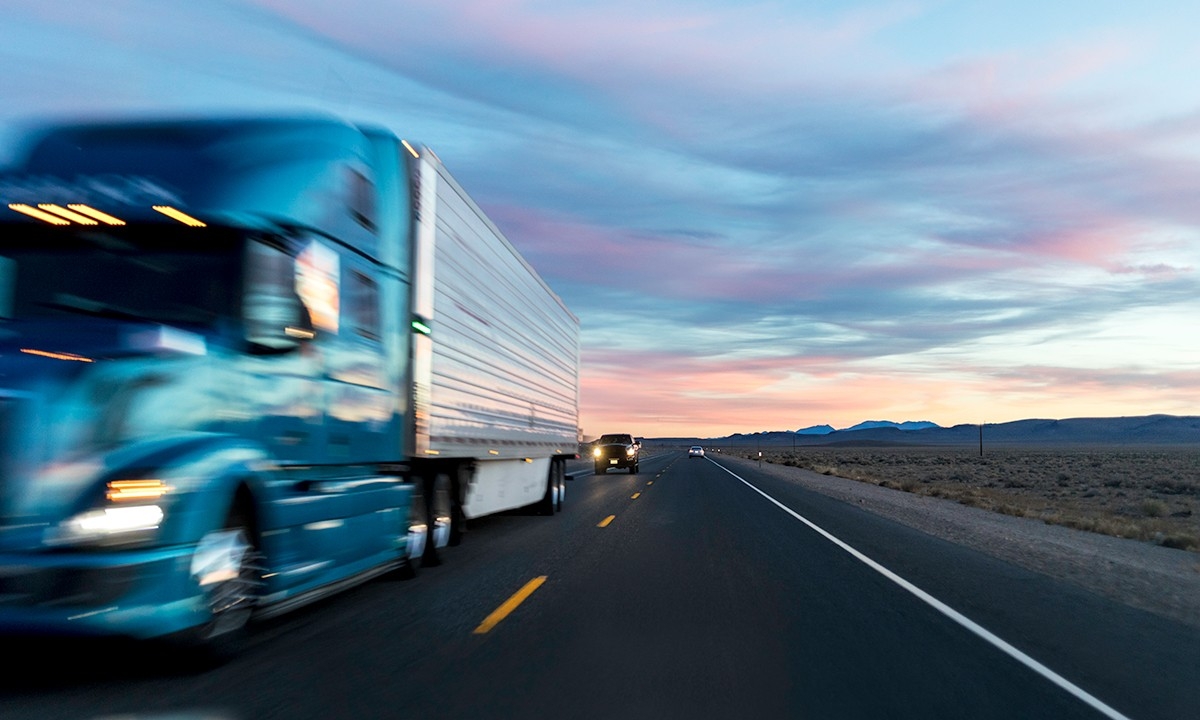
August 24, 2022
By: DON OSTERBERG
SAFETY ADVISOR, OMNITRACS

The Statistics, Causes, Consequences and Possible Solutions to Rising Truck Crash Rates.
From 2009 to 2019, truck crash fatalities rose by 48%(1). In 2020(2), nearly 5,000 people died in truck crashes, an average of 14 per day. Truck-involved crash injuries soared by 115%, averaging 436(3) per day in the period, reaching 146,000 in 2020(2). In human terms, this means hundreds of thousands of loved ones emotionally devastated, lives disrupted, diminished, or ended every year due to truck crashes.
But why?
Why, during two decades in which truck miles driven rose by 32%(4), did fatalities rise by 48% and injuries by 115%? Keep in mind that during this same period, occupant protection improved, and active safety technologies proliferated into the automobile market. Before we answer the question, let’s look at where and how crashes happen. As trucks, passenger cars, bikers, and cyclists encounter each other, knowing where crashes happen and who’s behind them can help everyone recognize dangerous situations:
- In a high percentage of crashes involving passenger cars and commercial trucks, the car was at fault. However, as professional drivers, we can and should be held to an even higher standard of defensive driving.
- Carriers often route drivers on the shortest routes rather than the safest routes. Only one in four crashes occurs on an interstate highway; 75%(5) of truck crashes are on non-interstate roads.
- Four-way intersections see 27%(6) of crashes.
- Rural roads endure a majority of the country’s fatal truck crashes, 57%(5).
- On the trucks themselves, the initial contact points are 58% front, 19% back, and 15%(6) side collisions.
A 2019 state-by-state map(5) of truck-involved fatalities shows that states near the coast have the lowest truck-involved fatality rates, generally under or just above 10% (Hawaii, 2%; New Hampshire, 4%). Fatal truck crash rates are highest in the Midwest and Mountain states, with Wyoming and Nebraska at 25% and 17%, respectively. Nationally, 9%(5) of fatal crashes involved trucks in 2019. It should be noted that drivers of large trucks in fatal crashes had a much lower rate of alcohol involvement than drivers of passenger cars, light trucks, or motorcycles, which had the highest, at 29%(5). On the other hand, truck drivers in fatal crashes had the highest rate of previous crashes: 23%(5).
Behind the Fall and Rise of Crash Rates
From about 1999 to 2009, crashes, deaths, and injuries involving large trucks declined significantly and then began a sharp climb back up until 2020, when Covid-19 reduced road traffic, and the trendline stabilized. Three things changed that helped push the rates back up in the last ten years.
- Infrastructure: As the Great Recession that began in 2008 started to ease, the trucks of an improving economy were operating on congested, underfunded transportation infrastructure.
- Fatigue: The pressures of “just in time” inventory and the spike in fast home deliveries pushed both carriers and drivers to test the limits of endurance behind the wheel, and speed limits, too. As drivers look for more hours, they can change sleep schedules drastically from week to week, impairing situational awareness and peak function.
- Distraction: Cell phones have become a dangerous source of distracted driving for all types of vehicles. The government is doing the first study in over 15 years(7), but we all know what can happen in the few seconds our eyes are on a device instead of the road. Cognitive distractions from even hands-free cell phones reduce situational awareness and increase the risk of distraction.
Driving Mistakes
Speeding, either above the limit or driving too fast for conditions, ‘tailgating’, and careless lane changes create dangerous situations, for both truckers and cars alike.
Other Factors
Poor vehicle maintenance, tire failure, or improperly loaded freight can cause serious crashes. Alcohol and drugs, prescribed and otherwise, also can cause crashes, but the rate of alcohol-impaired truck drivers involved among truckers was 3% in 2020, while other vehicle-type drivers ranged from 19 to 27%(8). The most important thing to note is that most crashes are caused by human behaviors and decisions, which we have the means to improve.
The High Cost of Crashes
In addition to the human costs, truck crashes damage a business’s brand as well. The estimated cost of police-reported large-truck crashes was $91,112 in 2005(9), according to the last major study on the topic ($140,000 today(10)). A recent American Transportation Research Institute (ATRI) study revealed that truck insurance rates increased 62% from 2009 to 2022(11), reflecting the concurrent rise in crashes and “nuclear verdicts” in post-crash litigation.
Nuclear Verdicts, Punitive Damages, the Paperwork of Lawsuits
Any verdict over $10 million is considered nuclear, and the defendant may not even be at fault. For example, in 2018, a jury in Texas issued a $90 million verdict(12) against a trucking company when, in fact, it was the driver of the passenger car that lost control, crossed a median, and crashed into the truck. Small to midsized companies can be consumed by the costs of responding to litigation record requests and other requirements. And in smaller fleets, the loss of just one vehicle due to a crash can inflict high costs on daily business operations.
Solutions for Crash Reduction
The most important element in reducing crashes is creating and leading a true ‘culture of safety.’ In a report on safe trucking, the FMCSA(13) says, “The norms, attitudes, values, and beliefs of organizations define the culture of an organization and are manifested in the behaviors of its agents.” For a fleet or even a single driver, that means safety is a core value, consistently shown in its actions.
- These are some of the essential steps in building a safety culture:
- Define and communicate the company’s shared values regarding safety
- Develop well-defined policies and rules; communicate them clearly and consistently
- Create a robust safety training program; communicate its importance; make sure it’s accessible
- Ensure drivers are working within DOT Hours of Service regulations
- Collect and analyze fleet safety data for training purposes
- Match driver skill level to trip requirements
- Create a rewards program to recognize safe driving practices
While authentic safety cultures are built over time, there are more immediate steps you can take to reduce crashes:
- Fleet maintenance: Brake problems were a factor in 29% of truck crashes
- Tire care: Proper inflation, reasonable load weights, regular inspection. Tire problems factor into 6%(14) of truck crashes.
- Hiring practices: Past behavior is the best predictor of future performance. Truck drivers with crash histories are at much greater risk of a crash than drivers with clean driving records
- Skill matching: Make sure driver skills are up to trip requirements
Video Safety in Accident Reduction
A comprehensive video safety system provides complete fleet and driver visibility. Video is captured inside the cab, on the road ahead, and ideally on the truck sides and rear, automatically recording notable road incidents for study, coaching, and legal exoneration in a crash. Complete systems include third-party expert examination of recorded incidents and driver activity for additional safety insights.
Once set up, the system functions as a virtual ride-along, observing everything and taking notes. The system keeps an eye on the driver, and may use Artificial Intelligence to provide alerts for speeding, tailgating, lane drifting, U-turns, texting, eyes off the road, signs of drowsiness, inattention, and other unsafe behaviors where coaching will be needed.
Video safety can be especially effective at addressing distracted driving and fatigue, two of the most significant crash risk factors. The camera’s ability to discern distraction and drowsiness is a new capability. As the first technology that provides true insight into driver and vehicle activities to improve safety, every fleet should consider adopting a video safety program.
Most Crashes Are Not Accidents
The most important thing to know is that most crashes are not accidents, but results, primarily of human decisions or actions. Fortunately, through communication, technology, persistence, and reward, we can improve decision-making and actions to reduce the tragic loss of life on our roads.
Learn more about Fleet Safety.